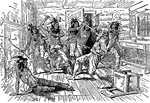
Death of Major Richard Waldron
On September 7, 1676, Waldron invited about 400 Indians to participate in a mock battle against the…

Gold Fish
The Goldfish, Carassius auratus, was one of the earliest fish to be domesticated, and is still one of…

Brook Trout
The brook trout, Salvelinus fontinalis, (sometimes called the eastern brook trout, Adirondack coaster…

Gourami
The gourami or gouramies are a family, Osphronemidae, of freshwater perciform fishes. The fish are native…

Sturgeon
Sturgeon is the common name used for some 26 species of fish in the family Acipenseridae, including…
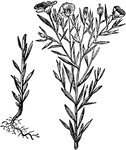
Flax
Flax (also known as common flax or linseed) (binomial name: Linum usitatissimum) is a member of the…

Wyoming Valley Massacre
The Battle of Wyoming was an encounter during the American Revolutionary War between American Patriots…

Black Sea Bass
The Black Sea Bass (Centropristis striata) is a fish in the Grouper family native to New York, Maine,…
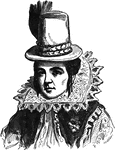
Pocahontas
Pocahontas (c. 1595 – March 21, 1617) was a Native American woman who married an Englishman, John…

The Wyoming Monument
The Monument marks the grave site of the bones of victims of the Wyoming Massacre, which took place…

Seal of Florida
The Great Seal of the State of Florida. The image shows a Seminole Native American sprinkling flowers.…
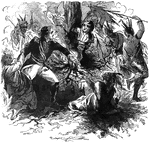
The Rescue of Israel Putnam from the Indians
"The French officer rescuing Putnam from the Indians." - Lossing

Seal of Kansas
The Great Seal of the State of Kansas, 1861. The seal pictures a sunrise, a steamboat, plowing, a wagon,…

Seal of Massachusetts
The Seal of the State of Massachusetts. The seal has a shield in the center with a Algonquin Native…

Seal of Minnesota
The Great Seal of the State of Minnesota. The seal depicts a farmer plowing as a Native American rides…

Red Jacket
Red Jacket (known as Otetiani in his youth and Sagoyewatha after 1780) (c. 1750–January 20, 1830)…

Seal of North Dakota
The Great Seal of the State of North Dakota. The seal depicts a tree, wheat, a plow, and a Native American…

Seal of Oklahoma
The Great Seal of the State of Oklahoma, 1907. The seal has a star with five rays hold seals of Cherokee,…

John Ross
John Ross (October 3, 1790 - August 1, 1866), also known as Kooweskoowe - a mythological or rare migratory…
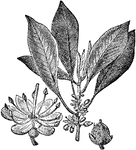
Gutta-percha
An illustration of the flower (a) and the fruit (b) of the gutta-percha. Gutta-percha (Palaquium) is…
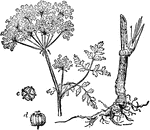
Northern Water Hemlock
Northern Water Hemlock is a species of Cicuta, native to northern and central Europe, northern Asia…

Hercules Beetle
The Hercules beetle (Dynastes hercules) is the most famous of the rhinoceros beetles. Native to the…
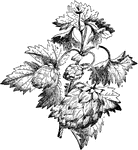
Hop
An illustration of the hop plant. Humulus, (hop) is a small genus of flowering plants, native to the…

Dog Violet
An illustration of a dog violet plant and it's fruit. Viola canina (Heath Dog-violet or Heath Violet)…
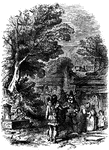
Samoset in the Streets of Plymouth
Samoset (ca. 1590 – 1653) was the first Native American to make contact with the Pilgrims.
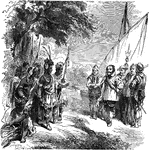
Smith's Meeting with Powhatan
The meeting between Capt. John Smith, founder of the Virginia colony, and Powhatan, the chief of the…
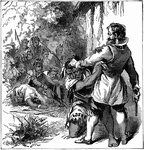
Smith Subduing Powhatan
The meeting between Capt. John Smith, founder of the Virginia colony, and Powhatan, the chief of the…
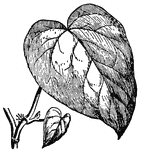
Hedera colchica
Hedera (English name ivy, plural ivies) is a genus of 15 species of climbing or ground-creeping evergreen…

Jasminum grandiflorum
Jasminum grandiflorum (chameli in Hindi) is a species of jasmine native to South Asia. In India, its…

Dodder
An illustration of Dodder including: 1, flower removed from; 2, Calyx; Ovary cut acrossed; 4, fruit…
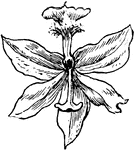
Tuberous Grass Pink
The Tuberous Grass Pink (Calopogon tuberosus) is an orchid native to the eastern United States from…
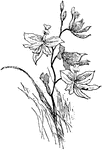
Tuberous Grass Pink
The Tuberous Grass Pink (Calopogon tuberosus) is an orchid native to the eastern United States from…
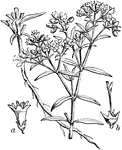
Chay Root
The Chay Root (Oldenlandia umbellata) is a plant native to India used for the red dye that can be extracted…
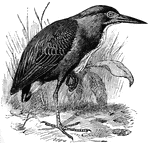
Green Heron
The Green Heron (Butorides virescens) is a small wading bird in the Ardeidae family of herons, and is…

Vertebral Column of Hymenochirus
African dwarf frogs of genus Hymenochirus, also known as dwarf aquatic frogs, are frogs native to Sub…
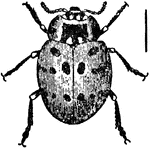
Ladybug
Coccinellidae is a family of beetles, known variously as ladybirds (British English, Australian English,…

Rabbit Stick
"A throwing-stick, similar to the Australian boomerang, used by the Indians of the southwestern United…
Silver Fir Cone and Foliage
An illustration of a silver fir cone and a small branch. Silver Fir or European Silver Fir (Abies alba)…
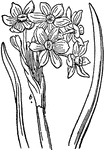
Narcissus
Narcissus is the botanic name for a genus of mainly hardy, mostly spring-flowering, bulbs in the Amaryllis…

Lamium Album
Lamium album (White Deadnettle) is a flowering plant in the family Lamiaceae, native throughout Europe…
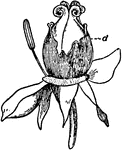
Peony Bud
Paeonia) is the only genus in the flowering plant family Paeoniaceae. They are native to Asia, southern…

Foxglove
An illustration of: 1, Coralla cut open showing the four stamens; 2, Unripe fruit (lengthwise); 3, ripe…
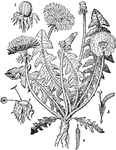
Dandelion
Taraxacum is a large genus of flowering plants in the family Asteraceae. They are native to Europe,…
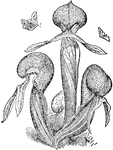
Darlingtonia Californica
Darlingtonia californica also called the California Pitcher plant, Cobra Lily, or Cobra Plant, is a…
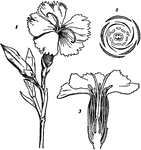
Dianthus
Dianthus is a genus of about 300 species of flowering plants in the family Caryophyllaceae, native mainly…

Yuca
The cassava, yuca, manioc, mogo or mandioca (Manihot esculenta) is a woody shrub of the Euphorbiaceae…
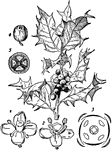
Holly
Ilex aquifolium (Holly, or European Holly to distinguish it from related species) is a species of holly…
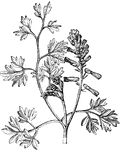
Fumitory
Fumaria is a genus of about fifty annual herbaceous flowering plants in the family Fumariaceae, native…

Fumitory (Side-view)
An illustration of the side-view of the fumitory flower Fumaria is a genus of about fifty annual herbaceous…

Fumitory Flower (Longitudinal Section)
An illustration of a longitudinal section of the fumitory flower. Fumaria is a genus of about fifty…
Fumitory Flower Anther
An illustration of a fumitory flower anther. Fumaria is a genus of about fifty annual herbaceous flowering…
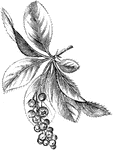
Berberis
An illustration of a berberis branch. Berberis (Bér-be-ris, barberry, pepperidge bush) a genus…
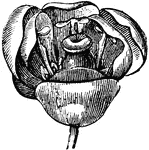
Berberis Flower
An illustration of the berberis flower. Berberis (Bér-be-ris, barberry, pepperidge bush) a genus…
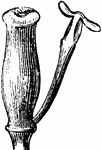
Pistil and Stamen of Burberis
An illustration of the a stamen and pistil of the berberis plant. Berberis (Bér-be-ris, barberry,…

Fruit of Berberis
An illustration of the berberis fruit. Berberis (Bér-be-ris, barberry, pepperidge bush) a genus…
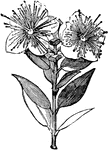
Myrtle
The Myrtle (Myrtus) is a genus of one or two species of flowering plants in the family Myrtaceae, native…
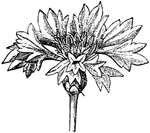
Inflorescence of a Cornflower
An illustration of the inflorescence of the cornflower. Centaurea cyanus ('Cornflower, Bachelor's button,…

Ray-floret of a Cornflower
An illustration of a ray-floret of the cornflower. Centaurea cyanus ('Cornflower, Bachelor's button,…
Disk-floret of a Cornflower
An illustration of a disk-floret of the cornflower. Centaurea cyanus ('Cornflower, Bachelor's button,…
